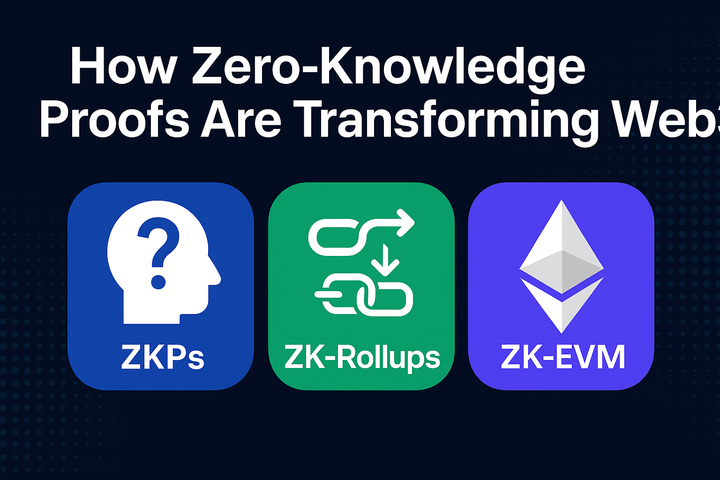Rugged by the Hype: The Inside Story of ZKJ's 80% Crash (and How to Protect Your Crypto Stack)

Introduction: When Buzz Turns Into Bloodbath
On a seemingly normal June morning, Polyhedra's ZKJ token nosedived over 80% in less than two hours. Within moments, wallets were drained, market caps obliterated, and Twitter turned into a war room. But this wasn't a random flash crash—it was the natural result of a pattern we're seeing across many 2025 zk narratives: inflated launch hype, opaque VC behavior, and unprepared retail investors.
Let’s dissect exactly how ZKJ blew up, why it happened, and how you can avoid being next in line.
1. The Hype Engine: How ZKJ Was Set Up to Explode
Polyhedra wasn’t just another token. With legitimate ZK infrastructure tech, cross-chain ambitions, and a growing dev community, it had all the ingredients for a moonshot. But it also had:
- Incentivized farming loops via Binance AlphaPoints
- Liquidity mining on PancakeSwap, where ZKJ was paired with KOGE (a lesser-known token)
- A launch timed with a massive 15.5M token unlock on June 15
Instead of sustainable adoption, this mix triggered a temporary demand spike that created a perfect exit point for insiders.
“ZKJ didn’t crash. It was designed to collapse under its own hype.”
2. Follow the Tokens: Who Really Dumped ZKJ?
Once the price began to dip, on-chain sleuths spotted clear signs:
- Three whale wallets removed ~2.5M ZKJ + KOGE from liquidity pools on PancakeSwap
- Wintermute, a major market maker, moved 3.39M ZKJ to exchanges (source)
- Coordinated withdrawals drained LPs, triggering what Polyhedra later called a **"liquidity attack"
Was this manipulation? Or just capital efficiency? Either way, the effect was brutal:
- ZKJ fell over 90% intraday
- Over $500M in market cap vanished
- Binance, CoinGape, and Messari confirmed it was among the biggest drops of 2025
To limit fallout, Polyhedra announced a $30M liquidity buyback and promised stronger tokenomics controls moving forward.

3. The Bigger Lesson: ZK Isn't a Shortcut to Riches
| ⚡ Risk Factor | 🧵 Real-World Trigger | ✅ Your Takeaway |
|---|---|---|
| Hype mining | Incentive farming inflated price | Hype ≠ Value. Follow utility, not rewards |
| Liquidity risk | Shallow LPs + whale exits | Monitor pool depth before investing |
| VC exits | Pre-sale tokens dumped | Check unlock schedules + vesting cliffs |
| Liquidity attack | Coordinated pool draining | Use on-chain tools (e.g., Nansen) to track whales |
| Volatility spiral | Leveraged traders liquidated | Avoid leverage in low-volume alts |
“Liquidity doesn’t just create profit—it magnifies panic.”
4. How to Protect Yourself from the Next ZK Rug
Tokenomics First, Hype Second
Use tools like Messari, TokenUnlocks, and DeFiLlama to investigate:
- Circulating supply vs max supply
- Unlock timelines and investor allocations
- Staking/farming mechanics
🔹 Watch On-Chain Whales
- Track VC wallets using Lookonchain
- Monitor LP depth with DEXTools
- Use alerts for major wallet activity
🔹 Be Willing to Miss the "Pump"
If you're late to a farmed token with low liquidity and unlocked insider tokens, sit it out. The opportunity cost is lower than the risk of losing 80% in minutes.
“In crypto, what you don’t buy often saves more than what you do.”
Conclusion: This Wasn’t Just a Crash. It Was a Case Study.
Polyhedra’s ZKJ crash should be studied by every investor, builder, and token issuer in the zk space. It exposed how:
- Early hype can be weaponized by insiders
- Liquidity games destroy faith in real innovation
- Transparency and tokenomics matter more than ever
The good news? The ZK narrative isn’t dead. But now, the market has woken up. And that means:
- Projects must prove real user demand
- Tokens must reflect long-term incentives
- Retail investors must do deeper research
Because the next 100x zk project? It won't explode in a week. It'll compound for a decade.
INTERNAL LINKS:
ZKJ: Hype Formula
ZKJ Hype-Building Strategy Overview
Polyhedra Network and $ZKJ
Why Polyhedra and $ZKJ Matter
What happened with Polyhedra ($ZKJ)



Comments ()